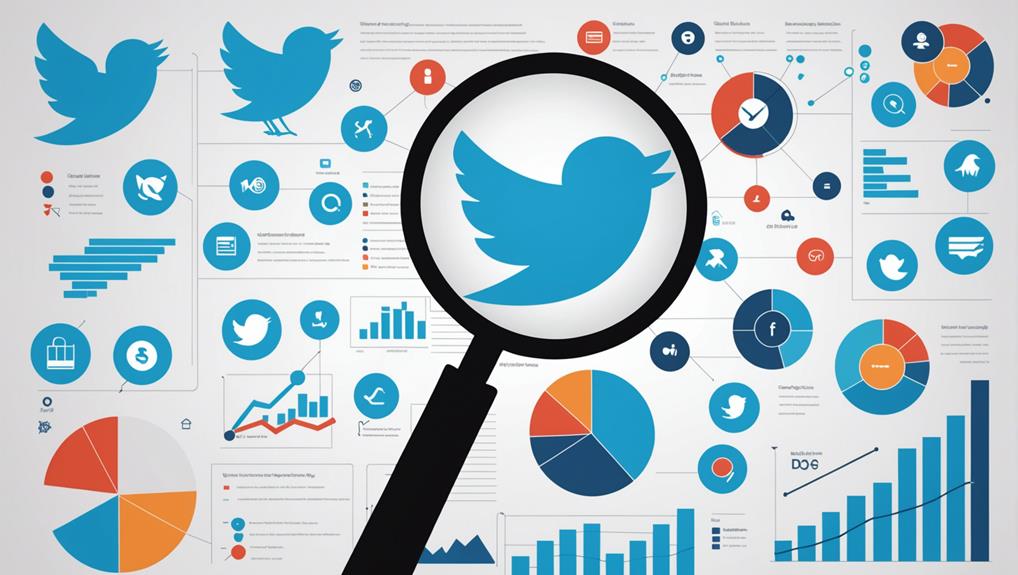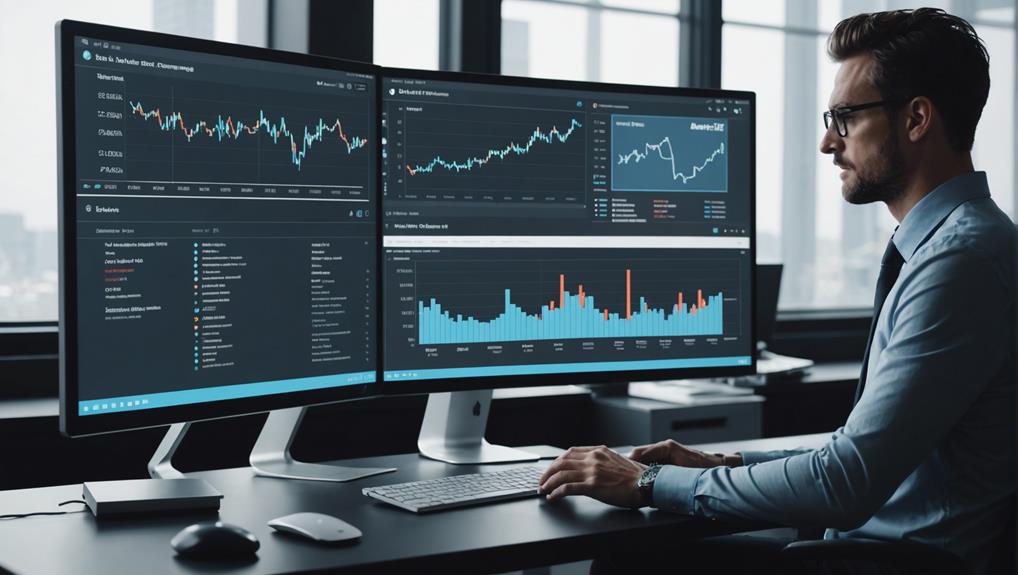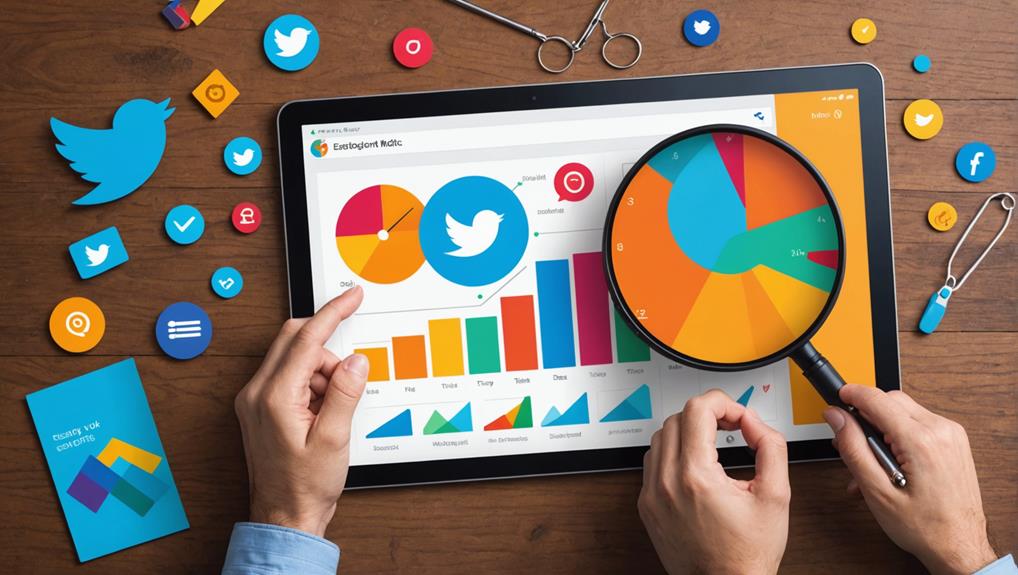To optimize your Twitter engagement rate benchmarking, start with accurate calculation by using the formula: (Likes + Retweets + Replies) / Total Followers. Compare this against industry-specific engagement rates—nonprofits see about 0.04%, while sports teams are at 0.07%. Regularly track these metrics over time to uncover trends and areas for improvement. Tailor your strategy based on industry norms; for instance, sports teams benefit from frequent posting, averaging 41.46 tweets weekly, to achieve higher engagement. Understanding these nuances and implementing the right tactics can greatly enhance your Twitter strategy, offering deeper insights into effective content and timing strategies.
Key Takeaways
- Compare your engagement rate against industry-specific benchmarks to set realistic performance targets.
- Analyze historical engagement data to understand trends and improve future content strategies.
- Regularly measure engagement rates to identify patterns and adjust tactics accordingly.
- Tailor your Twitter strategy to your industry’s unique engagement patterns for optimal results.
- Implement best practices from top-performing brands to enhance your Twitter engagement.
Calculate Twitter Engagement Rate
In today’s data-driven digital landscape, calculating your Twitter engagement rate is vital for understanding how effectively your content resonates with your audience. This metric, determined by the formula: Engagement Rate = (Likes + Retweets + Replies) / Total Followers, offers a clear measure of audience interaction relative to your follower count.
By calculating engagement rate on a per-post basis, you can gain granular insights into the performance of individual tweets, enabling a more refined content strategy.
Understanding engagement rate benchmarks is important for setting realistic goals. The average engagement rate on Twitter is approximately 0.029%, while the top 25% of brands achieve a median engagement rate of 0.08%. These figures serve as valuable benchmarks for evaluating your performance and tailoring your approach to boost daily engagement.
Regularly measuring your Twitter engagement rate over selected periods, whether daily, weekly, or monthly, helps identify trends and patterns in audience interaction across social media channels.
To optimize engagement, compare your metrics against industry-specific standards and incorporate best practices to follow in your content strategy. Competitor benchmarking can further inform your efforts, guiding improvements in audience interaction and overall content resonance.
Analyze Engagement Benchmarks
Analyzing engagement benchmarks is essential for evaluating your brand’s performance within its specific industry context. Given the variability of engagement rates across different sectors, understanding your industry’s average Twitter engagement rate is significant.
For example, while sports teams boast a median social media engagement rate of 0.07%, nonprofits see a median of 0.04%. These industry-specific engagement rates serve as an important reference point when analyzing benchmarks to assess your brand’s positioning against competitors.
Engagement rates on Twitter for the top 25% of brands, which reach a median of 0.08%, underscore the importance of competitive analysis. Identifying how your brand compares can highlight potential gaps in performance and reveal opportunities for optimizing Twitter content strategies.
Regularly benchmarking against the median engagement rate, like the 0.05% for higher education, allows for the setting of realistic targets and the refinement of social media strategies.
Leveraging monthly historical data on average engagement rates can provide insights into user behavior trends and fluctuations over time. Tools for competitor analytics further aid in tracking changes in engagement rates, empowering brands to adapt their content strategies promptly and effectively.
Tailor Industry Strategies
Given the distinct engagement patterns across various industries, tailoring your Twitter strategy to align with sector-specific norms is imperative.
Industries like sports and higher education exhibit varying median engagement rates on Twitter, with sports teams achieving 0.07% and higher education institutions at 0.05%. These figures underscore the necessity of crafting strategies that resonate with how the audience interacts within each sector.
For instance, sports teams often benefit from high-frequency posting, averaging 41.46 posts per week, to maintain momentum and achieve higher engagement rates.
In contrast, nonprofits and the alcohol industry, both with a median engagement rate of 0.04%, demonstrate the importance of industry-specific posting frequencies and content quality over quantity.
Nonprofits post approximately 6.97 times weekly, emphasizing consistent and relevant content, while the alcohol industry sees success with just 1.02 posts per week, highlighting that impactful content can drive engagement.
Implementing best practices from high-performing brands, such as leveraging trending topics and diversifying types of content, can enhance overall engagement.
Understanding these niche strategies on social media platforms is essential to benchmarking success and optimizing engagement rate on Twitter.
Frequently Asked Questions
How to Improve Engagement Rate on Twitter?
To improve Twitter engagement rates, refine your content strategy by targeting audiences effectively, optimizing tweet timing, utilizing visual elements, hashtags, and interaction tactics. Enhance engagement with thread creation, influencer collaboration, poll engagement, and maintaining a consistent brand voice.
How to Measure Engagement Rate on Twitter?
To measure engagement rate on Twitter, utilize Twitter Analytics to assess engagement metrics, audience insights, and content strategy. Evaluate hashtag performance, tweet timing, visual content, poll engagement, follower growth, and sentiment analysis for thorough performance understanding.
What Is a Good Engagement Rate Benchmark?
A good engagement rate on Twitter varies by industry, with an average of 0.029%. Leveraging audience insights, optimizing tweet frequency, employing visual content, strategic hashtag usage, and timing analysis can enhance content strategy and follower interaction.
What Is a Good Average Engagement Rate on Twitter?
A good average engagement rate on Twitter, around 1% to 5%, can be achieved by optimizing Twitter metrics through strategic audience interaction, effective content strategy, appropriate posting frequency, hashtag usage, engaging visual media, and timely tweet timing.
Conclusion
In summary, effective benchmarking of Twitter engagement rates necessitates a thorough understanding of calculation methods, an in-depth analysis of industry-specific benchmarks, and strategic tailoring to industry norms. By adopting a data-driven approach, organizations can enhance their social media strategies, thereby optimizing audience engagement. Awareness of prevailing trends and continuous adaptation to evolving standards will further enable brands to maintain a competitive edge. This strategic alignment guarantees that engagement efforts are both relevant and impactful within the dynamic social media landscape.




